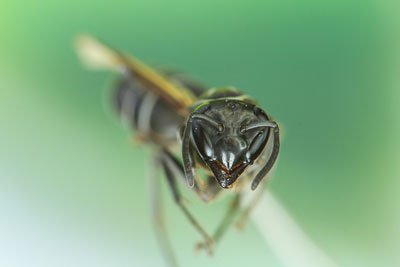Wasp venom toxin MP1 blasts holes in cancer cells
Posted: 4 September 2015 | Victoria White
Research reveals exactly how the Polybia paulista wasp’s venom toxin – called MP1 – selectively kills cancer cells without harming normal cells…


The venom of Polybia paulista, a wasp native to Brazil, could be used in the fight against cancer, according to new University of Leeds research.
The wasp protects itself against predators by producing venom known to contain a powerful cancer-fighting ingredient. The research reveals exactly how the venom’s toxin – called MP1 (Polybia-MP1) – selectively kills cancer cells without harming normal cells.
MP1 interacts with fatty molecules, called lipids, that are abnormally distributed on the surface of cancer cells, creating gaping holes that allow molecules crucial for cell function to leak out.
“Cancer therapies that attack the lipid composition of the cell membrane would be an entirely new class of anticancer drugs,” said Dr Paul Beales, from the School of Chemistry. “This could be useful in developing new combination therapies, where multiple drugs are used simultaneously to treat a cancer by attacking different parts of the cancer cells at the same time.”
In laboratory tests, the toxin has been shown to inhibit the growth of prostate and bladder cancer cells, as well as multi-drug resistant leukemic cells. However, until now, it was not clear how MP1 selectively destroys cancer cells without harming normal cells.
Dr João Ruggiero Neto of São Paulo State University in Brazil, suspects that the reason might have something to do with the unique properties of cancer cell membranes. He said, “Formed in only seconds, these large pores are big enough to allow critical molecules such as RNA and proteins to easily escape cells.”
Researchers plan to alter MP1’s amino acid sequence
In future studies, the researchers plan to alter MP1’s amino acid sequence to examine how the peptide’s structure relates to its function and further improve the peptide’s selectivity and potency for clinical purposes.
“Understanding the mechanism of action of this peptide will help in translational studies to further assess the potential for this peptide to be used in medicine,” said Dr Beales. “As it has been shown to be selective to cancer cells and non-toxic to normal cells in the lab, this peptide has the potential to be safe, but further work would be required to prove that.”
The research findings are published in the Biophysical Journal.
Related topics
Amino acids, Oncology
Related organisations
Cancer Research, Leeds University, São Paulo State University
Related people
Dr Paul Beales



